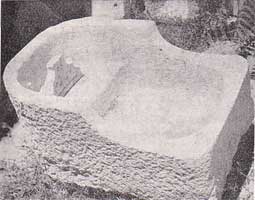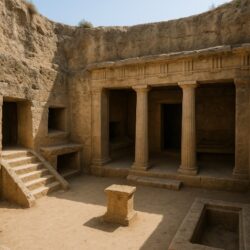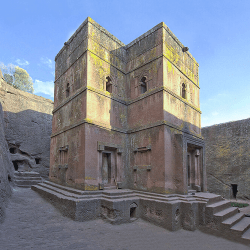The Roman baths in Alexandria differed in their forms and varied in their purposes, giving Alexandrian baths unique characteristics not found at the time in Roman baths in Italy or the vast Roman provinces, including Egypt itself.
In Rome, the baths of emperors like Nero, Trajan, Caracalla, and Diocletian were characterized by their immense size because they were not merely places for washing and bathing. Libraries, sports grounds, water reservoirs, gardens, and other entertainment facilities were built within their confines.
As for the baths in the provinces of Italy, bathing there occurred in stages. The bather would first enter a room with cold water called the frigidarium, then pass through a steam room called the tepidarium, and finally enter a hot water room called the caldarium.
Some of these baths expanded to include a sports ground or swimming pool within their complex. There were also adjoining baths specifically for women, although some baths were initially used by both men and women.
The baths in Alexandria and its surrounding area were not limited to this classical style known in Italy, Libya, and North Africa. Instead, during that era, baths of another, almost unique style among Roman baths were built in Alexandria and its vicinity. Nothing like them is known in the baths of Italy or in the baths of Egypt dating back to the Roman period. Among these were the private baths found in the homes of wealthy residents of Alexandria and the surrounding area. These private baths differed from the private baths discovered in the provinces of Italy, such as some found in Pompeii, which followed the system of rooms with varying temperatures (hot and cold) – the system used in public baths.
The private baths of Alexandria, however, were sometimes in the form of a rectangular or oval bathtub (bagnio). The Egyptian character of this type is confirmed by the fact that the bathtubs (bagnios) discovered in Alexandria were made of basalt stone, used in Pharaonic Egypt for buildings and statues.
Examples of these bathtubs (bagnios) exist in the Alexandria Museum (the Graeco-Roman Museum).
Although these bathtubs were sometimes reused as coffins to hold the dead after a lid was made for them – like those discovered in the Wardian Cemetery in western Alexandria. These tubs were decorated on their outer walls, especially around the water drain openings, with animal heads such as lions or birds carved from the same stone.

These bathtubs (bagnios) might also be of a type resembling a seat with a backrest, like the marble tub discovered in Alexandria and preserved in the Graeco-Roman Museum. The museum has a similar example made of limestone. Such tubs have a recessed area for placing and washing the feet, leading to the belief that they were foot baths. The use of these backrest-equipped tubs, resembling seats, was not limited to private baths but extended to public baths for purposes of washing feet and performing religious ritual ablutions, as found in the baths of Koum El-Nagila, Awlad El-Sheikh near Abu El-Matamir, Taposiris (Abusir), Canopus (Abukir), and Abu Mena.
A group of Roman baths has been discovered in the city of Alexandria during excavations conducted by archaeological missions, including:
- The Kom El-Dikka Baths,
- The Taposiris (Abusir) Baths,
- The Canopus (Abukir) Baths











